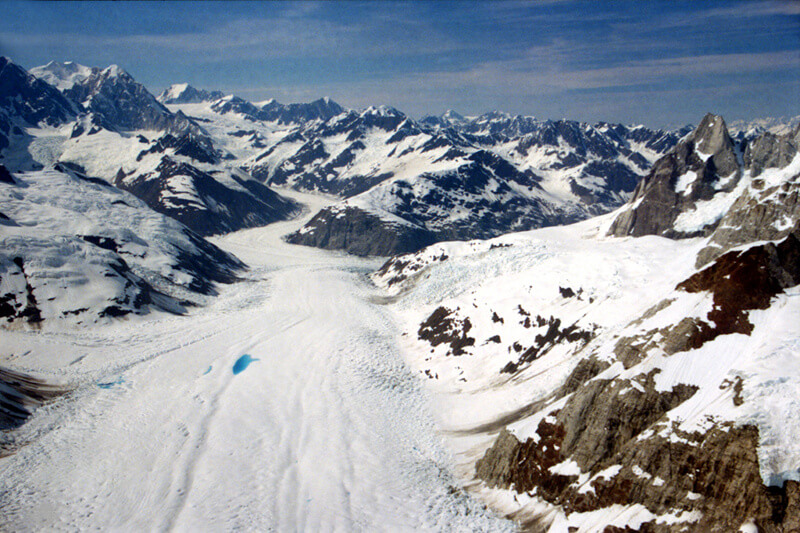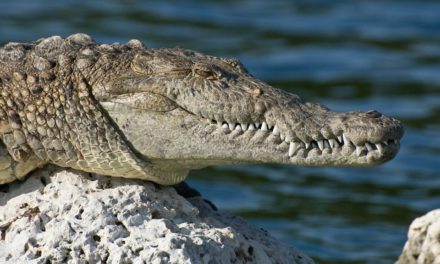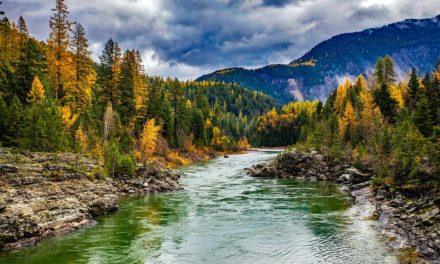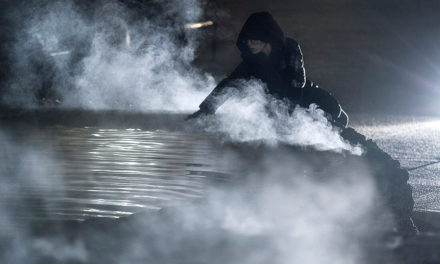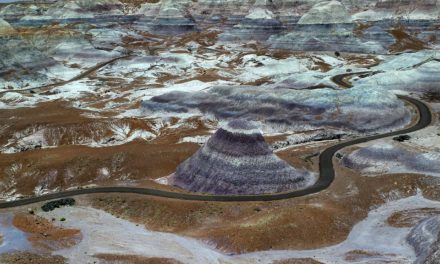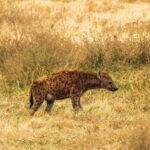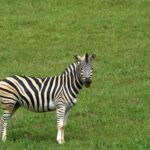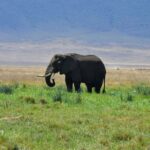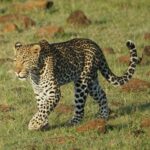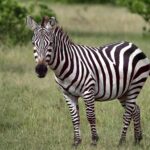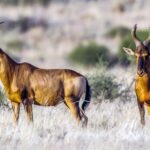Table of Contents
Overview / About the Park
Glacier Bay National Park lies along Alaska’s remote southeastern coast, part of the larger Tongass National Forest. Spanning over 3.3 million acres, it’s a world of tidewater glaciers, icy fjords, and deep wilderness where mountains meet the sea.
This park tells one of Earth’s most powerful natural stories a land once buried under ice that has been steadily retreating for more than 200 years, revealing new life and landscapes in its wake.
Designated a UNESCO World Heritage Site and part of a Biosphere Reserve, Glacier Bay is a living laboratory of change raw, remote, and breathtaking.
Wildlife & Nature
The park is teeming with life both above and below the waterline. Visitors might see humpback whales, orcas, sea lions, harbor seals, and sea otters in the bay’s glacial waters.
Along the shore, brown bears, moose, wolves, and mountain goats roam the forests and cliffs.
Birdwatchers can spot bald eagles, puffins, and Arctic terns.
The landscape ranges from old-growth temperate rainforest near the coast to alpine tundra high in the mountains, all shaped by glaciers that still carve the land today.
Experiences & Activities
- Boat Cruises: The best way to experience Glacier Bay. Day cruises from Bartlett Cove travel deep into the park to view Margerie, Johns Hopkins, and Lamplugh Glaciers.
- Kayaking: Paddle among icebergs and marine wildlife a silent, humbling way to explore the fjords.
- Wildlife Watching: Spot whales breaching or bears foraging along the shore from your boat or lodge deck.
- Hiking: Short trails near Bartlett Cove, like the Forest Trail or Bartlett River Trail, lead through rainforest and along the coast.
- Ranger Programs: Join talks and guided walks offered by the Glacier Bay Visitor Center.
- Flightseeing Tours: Small-plane flights give dramatic aerial views of glaciers, mountains, and the bay’s shifting ice fields.
- Camping & Backcountry Adventures: For experienced travelers, wilderness camping along the coast offers solitude and wild beauty.
Best Time to Visit
The main season runs from May through early September. Summer brings mild weather, long daylight hours, and peak wildlife activity. June and July are the best months for whale watching and glacier calving. Spring and fall are quieter, with fewer boats and more dramatic weather. Winters are harsh and access is very limited.
How to Reach & Park Entry
- By Air: The closest gateway is Gustavus, reachable by daily flights from Juneau (about 30 minutes).
- By Sea: Cruise ships, private boats, and the Alaska Marine Highway ferry all bring visitors into Glacier Bay.
- From Gustavus: It’s a short 10-mile drive to Bartlett Cove, home to the visitor center, dock, and lodges.
- Entry Fee: There is no park entry fee, but cruise operators and guides may charge separate fees.
- Permits: Required for overnight backcountry camping and some boating trips.
Where to Stay / Camping Options
- Glacier Bay Lodge: The only hotel inside the park, located at Bartlett Cove, with rooms overlooking the bay.
- Bartlett Cove Campground: Free, first-come-first-served sites near the lodge and beach.
- Gustavus Lodges & Inns: A variety of cozy lodges, cabins, and bed-and-breakfasts are available in nearby Gustavus.
- Backcountry Camping: Available along the coastline visitors must be self-sufficient and follow Leave No Trace rules.
Travel Tips / Safety Notes
- Dress in layers weather can change from sunny to stormy in minutes.
- Bring binoculars for whale watching and rain gear for sea spray and mist.
- If kayaking or boating, always wear a life jacket and know the tides.
- The park has no cell service; bring printed maps and let someone know your travel plans.
- Bears are common store food properly and keep a safe distance.
- Advance reservations are essential for the lodge and boat tours during summer.
Packing List
- Waterproof jacket and pants
- Warm base layers and gloves
- Sturdy hiking boots or waterproof shoes
- Binoculars and camera
- Reusable water bottle and snacks
- Hat, sunglasses, and sunscreen (yes, even in Alaska)
- Insect repellent
- Dry bags (for boating or kayaking)
- Bear spray (for backcountry trips)
- Small first-aid kit
- Extra batteries or power bank
Visitor Statistics
Glacier Bay National Park sees around 700,000 visitors per year, most arriving by cruise ship.
Only a small fraction fewer than 10,000 explore the park on foot, kayak, or independent trips. Despite the high visitation numbers, the park’s vast size ensures plenty of wilderness and quiet space for reflection.
Conservation & Responsible Tourism
Glacier Bay is a living example of glacial retreat and ecosystem renewal. The National Park Service and scientists closely monitor its changing glaciers and wildlife populations.
Visitors can help by:
- Respecting marine life keeping distance from whales and seals.
- Using reef-safe sunscreen to protect ocean habitats.
- Reducing noise and waste while boating or kayaking.
- Supporting sustainable tour operators and local communities in Gustavus.
Glacier Bay is one of the few places on Earth where you can watch the planet transform in real time glaciers cracking, forests emerging, and wildlife returning. It’s not just a destination; it’s a front-row seat to the power and resilience of nature.

